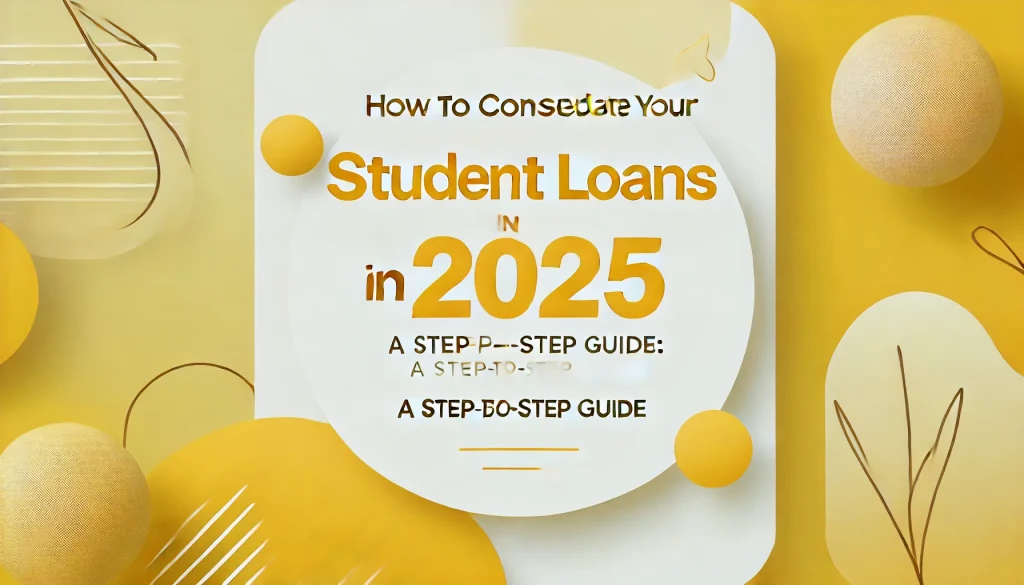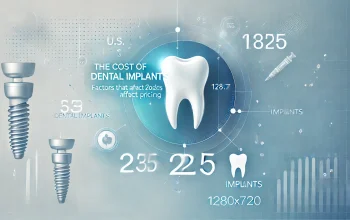Step-by-Step Student Loan Consolidation for 2025

Student loan consolidation can be a strategic move to simplify your financial life, especially with the evolving landscape in 2025. This comprehensive guide will walk you through the process of consolidating your student loans, detailing each step to ensure you make informed decisions and manage your debt effectively.
Table of Contents
What Is Student Loan Consolidation?
Student loan consolidation involves combining multiple federal or private student loans into a single loan. This process can streamline your payments, potentially lower your interest rate, and extend your repayment term. For federal loans, consolidation is managed through a Direct Consolidation Loan, while private loans are consolidated through private lenders.
Benefits of Student Loan Consolidation
Before diving into the steps of consolidation, it’s important to understand the benefits:
- Simplified Payments: Combining multiple loans into one reduces the number of payments you need to manage.
- Potential for Lower Interest Rates: Federal consolidation can offer a weighted average interest rate, while private lenders may offer competitive rates.
- Extended Repayment Terms: Consolidation can extend your repayment period, lowering monthly payments, although it may increase the total interest paid over time.
- Access to New Repayment Plans: Some lenders offer flexible repayment options, including income-driven plans.
Step-by-Step Guide to Consolidating Your Student Loans
Step 1: Assess Your Loans
1.1. Gather Information:
Start by collecting details about all your student loans, including the balance, interest rate, and type (federal or private). This information can be found on your loan servicer’s website or in your loan statements.
1.2. Determine Your Goals:
Decide what you want to achieve with consolidation. Are you looking to lower your monthly payments, secure a lower interest rate, or simplify your payment process?
1.3. Check Eligibility:
Ensure that your loans are eligible for consolidation. Federal loans can be consolidated through a Direct Consolidation Loan, while private loans are consolidated through private lenders.
Step 2: Understand Your Options
2.1. Federal Loan Consolidation:
Federal student loans can be consolidated through a Direct Consolidation Loan. This option combines multiple federal loans into one with a fixed interest rate based on the weighted average of your existing rates.
2.2. Private Loan Consolidation:
Private loans are consolidated through private lenders. This may involve refinancing, where you take out a new loan with a different interest rate and term.
2.3. Compare Lenders:
Research and compare different consolidation lenders. For federal loans, this means comparing the terms of the Direct Consolidation Loan. For private loans, compare rates, terms, fees, and customer reviews.
Step 3: Calculate Your New Loan Terms
3.1. Estimate Your New Interest Rate:
For federal consolidation, your new interest rate will be the weighted average of your existing rates, rounded up to the nearest one-eighth percent. For private loans, interest rates can vary based on the lender and your credit score.
3.2. Determine Repayment Terms:
Decide on the repayment term that best fits your budget. Longer terms reduce monthly payments but increase the total interest paid over time. Federal consolidation offers terms up to 30 years, while private lenders may offer varying terms.
3.3. Use Online Calculators:
Many lenders offer online calculators to estimate your new monthly payments and total loan costs. Use these tools to visualize how consolidation will impact your finances.
Step 4: Apply for Consolidation
4.1. Federal Loan Application:
To apply for a Direct Consolidation Loan, visit the Federal Student Aid website. Complete the online application, providing information about your loans and selecting your servicer.
4.2. Private Loan Application:
For private consolidation, visit the lender’s website and complete their application process. You may need to provide documentation such as income verification and loan statements.
4.3. Review and Sign Documents:
Carefully review the terms of your new loan before signing. Ensure that all details are accurate and that you understand your new repayment terms.
Step 5: Manage Your New Loan
5.1. Continue Making Payments:
Continue making payments on your existing loans until the consolidation process is complete. Missing payments could negatively impact your credit score.
5.2. Confirm Loan Disbursement:
Once your consolidation is approved, confirm that the new loan has been disbursed and that your old loans have been paid off. Monitor your new loan statements to ensure accuracy.
5.3. Update Your Budget:
Adjust your budget to reflect your new monthly payment. Track your progress and make adjustments as needed to stay on top of your finances.
Pros and Cons of Student Loan Consolidation
Pros:
- Simplified Payments: One monthly payment instead of multiple payments.
- Potential Savings: Lower monthly payments with extended repayment terms.
- Flexible Plans: Access to new repayment plans and options.
Cons:
- Longer Repayment Terms: May increase the total interest paid over the life of the loan.
- Loss of Benefits: Federal consolidation may result in the loss of borrower benefits, such as loan forgiveness.
- Variable Rates: Private loan consolidation may include variable interest rates, which can increase over time.
Common Questions About Student Loan Consolidation
Q1: Can I consolidate both federal and private loans together?
No, federal and private loans must be consolidated separately. Federal loans are consolidated through a Direct Consolidation Loan, while private loans are consolidated through private lenders.
Q2: Will consolidation affect my credit score?
Consolidation itself should not impact your credit score. However, making timely payments and maintaining good credit practices will positively affect your score.
Q3: Can I consolidate my loans more than once?
Yes, you can consolidate your loans more than once. However, consider the implications on your interest rate and repayment terms before doing so.
Q4: How long does the consolidation process take?
The consolidation process typically takes 30 to 60 days. Ensure that you continue making payments on your existing loans during this period.
Conclusion
Consolidating your student loans in 2025 can simplify your financial management, potentially lower your monthly payments, and offer access to new repayment plans. By following this step-by-step guide, you can make informed decisions and choose the best consolidation option for your needs.
Before proceeding, carefully evaluate your options, compare lenders, and consider the long-term implications of consolidation. For personalized advice, consult with a financial advisor or loan specialist to ensure you make the best choice for your financial future.


